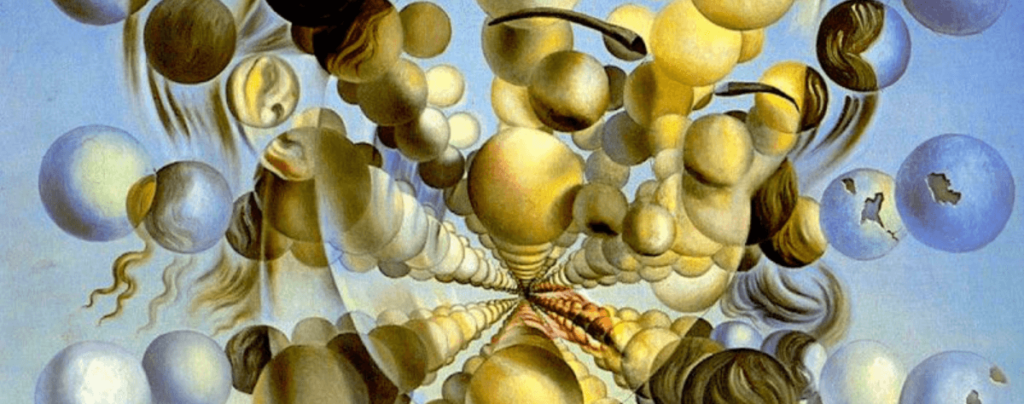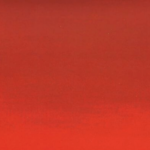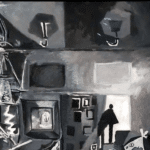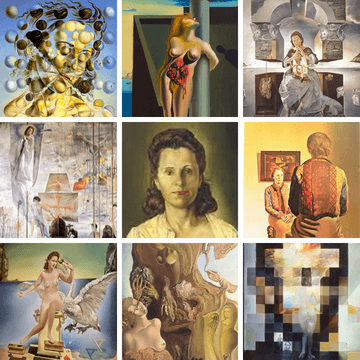
Best Gala Dalí Paintings and Portraits
GALA BY SALVADOR DALI: HIS MUSE, HIS LOVER, HIS EVERYTHING
Gala Dali was Salvador Dali’s wife. It was his muse, his inspiration, his business manager and dealer. She was an intriguing woman that many called haughty, ambitious, aggressive, power-hungry and promiscuous. And she was also elegant, intelligent, independent, sophisticated and intuitive.
Salvador Dali and Gala spent together 53 years, from the moment they met in Cadaques in 1929, until her death in 1982 also in Cadaques. Dali painted her countless times, and her face and body made history. But she remained an enigmatic character that preferred to stay in the shadows and work behind the scenes to help Dali become legend.
You can learn more about her in Gala’s biography we published in our blog. But in today’s post we’ll be reviewing the most famous Salvador Dali Gala paintings, we’ll dig into their meaning and through them we’ll get to know a little better Gala and her role in Dali’s life and career.
Top Salvador Dali's Gala paintings:
1
Imperial Monument To the Child-Woman (1929)
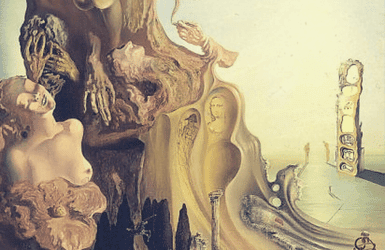
We start our list of Gala paintings with the very first appearance of Gala in Dali's works. It was the Summer of 1929 that Salvador Dali and Gala met in Cadaques, where the artist spent the holidays and received guests from Paris. Although Gala had arrived with her husband, the poet Paul Eluard, Gala and Dali fell in love. This painting was started during the brief spell when Gala and Eluard went back to Paris and Dali headed to his hometown of Figueres, before joining Gala in Paris to be finally together. The painting is not completed, and it simbolizes how Gala will help him exorcize his terrors and fears, but also will be the cause of his family rejecting him.
SEE IT IN: Museo Nacional Centro de Arte Reina Sofia (Madrid, Spain)
2
The Bleeding Roses (1930)
SEE IT IN: Coleccion de Arte Abanca (Galicia, Spain) – on display depending on the ongoing temporary art exhibits.
3
The Angelus of Gala (1935)
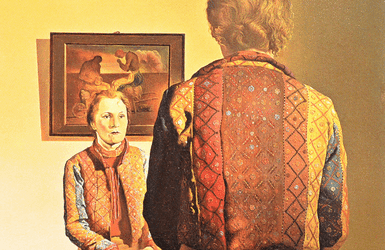
Dali was obsessively fascinated by the Angelus of Millet, which he reproduced in numerous of his works, and for which he figured out twisted interpretations. One of them, for instance, the idea that the woman in the painting reminds him of a religious mantis about to devour her male after copulating. And that connects with Salvador Dali's sexual fears and Gala's agressive sexuality.
In this painting Dali's wife appears twice: one Gala seats with her back facing us, the other one is facing her. A paiting of the Angelus hangs on the wall in the background.
SEE IT IN: MOMA (New York, USA)
4
Dream Caused by the Flight of a Bee Around a Pomegranate a Second Before Awakening (1944)
SEE IT IN: Museo Nacional Thyssen-Bornemisza (Madrid, Spain)
5
Portrait of Galarina (1945)
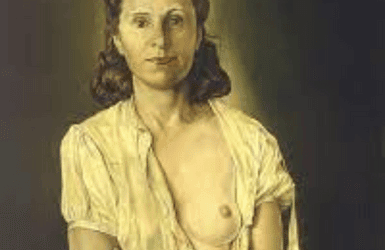
The muse of Raphaello, the great artist of the Italian Renassance was nicknamed Fornarina, because she was the daughter of the "fornaio", the baker. Dali then decided that his wife would be his own "Galarina". It is a very realistic portrait: one of Gala's nails shows chipped nailpolish. Dali himself said that if looked at this portrait for too long, it frightened him. This painting has also been symbolically connected to Salvador Dali's basket of bread, because Gala's crossed arms sort of look like the wickerwork of the basket, and Gala's bread illuminates the painting just like the bread does in the other painting.
SEE IT IN: Teatre Museu Dali (Figueres, Catalonia, Spain)
6
Atomic Leda (1949)
The mortal twins in Dali’s mind represented Dali’s late baby brother (dead before he died) and… his sister Anna Maria. In this painting Gala appears naked, floating in the space and being the object of desire of a swan.
SEE IT IN: Teatre Museu Dali (Figueres, Catalonia, Spain)
7
The Madonna of Portlligat (1949 and 1950)
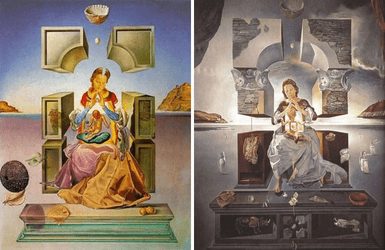
There's two versions of the Madonna of Portlligat, both dipicting Gala as the Virgin Mary of Portlligat, the little bay near Cadaques (Spain) where Dali and Gala spent several months of the year. She's surrounded by an atomized structure that reminds of a church arch, in the background appears the landscape of the rocky coast of Portlligat, and around Gala Dalí appear several marine objects - shells, sea urchins... There's also a small egg floating over Gala - symbol of life and death.
Salvador Dali presented his first version to Pope Pius XII, and the Pope approved of it.
SEE THE 1949 VERSION IN: Markette University (Milwaukee, Wisconsin, USA)
SEE THE 1950 VERSION IN: Fukuoka Art Museum (Fukuoka, Japan)
8
Galatea of the Spheres (1952)
SEE IT IN: Teatre Museu Dali (Figueres, Catalonia, Spain)
9
The Discovery of America by Christopher Columbus (1958–59)
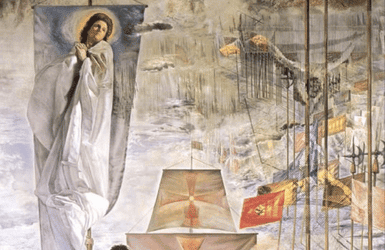
A caravel arrives to the American Coast, and Christopher Columbus descends of it holding a banner of a Saint, whose face is that of Gala. There's also a monk kneeling and holding a crucifix, that might be interpreted as Salvador Dali himself.
When Dali painted it, there was a group of historians claiming that Chritopher Columbus was Spanish or Catalan, rather than Italian - which the artist found intriguing. Salvador Dali's wife was also the one to suggest they moved to the USA when WW2 broke out, and Gala was the one that led him to success in the States.
SEE IT IN: The Dali (St. Petersburg, Florida, USA)
10
Portrait of Gala Dalí looking at the Mediterranean sea which from a distance of 20 meters is transformed into a portrait of Abraham Lincoln (1976)
SEE IT IN: Teatre Museu Dali (Figueres, Catalonia, Spain)
11
Dalí Lifting the Skin of the Mediterranean Sea to Show Gala the Birth of Venus (1978)
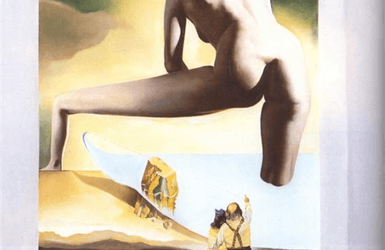
Dali also studies how to trick the brain into seeing tridimensional images that come out of his paintings. He creates two paintings that look very similar but have small differences between them. Then places to angled mirrors in between: the spectator is supposed to approach the angle of the mirrors and look forwards, one eye seeing the reflection in one mirror, the other eye seeing the reflection of the other painting. Then the brain blends both images, creating a tridimensional effect in the spectator's mind. In this painting we see an aged Dali, lifting up a sea water sheet to show Gala, presented as a young girl that never ages, the birth of Venus.
The gigantic image of Venus is of course Gala Dalí again.
SEE IT IN: Teatre Museu Dali (Figueres, Catalonia, Spain)
Which are your favorite Salvador Dali wife paintings?
Marta
RESEARCHING FOR A TRIP IS TIME-CONSUMING…
Need more inspiration?
Our 100% FREE Barcelona Collection will give you everything you need to organize the trip of your lifetime to Barcelona.
BEST INSIDER TIPS FROM THE PROS!

Last update on 2024-04-25 / Affiliate links / Images from Amazon Product Advertising API

